The Grünfeld Defense is a defense for Black that is named after the Austrian player Ernst Grünfeld.
The starting moves of the opening are similar to that of the King’s Indian Defense. One thing both openings have in common is that they employ the principle of hypermodern chess.
The hypermodern principle focuses on controlling space with the minor pieces (bishops and knights) as opposed to the general norm of using pawns to control the center.
In the Grünfeld Defense, Black allows White to grab control of the center early on in the game while they develop their pieces. They will then look to counterattack and undermine White’s pawn structure later.
The starting moves of the Grünfeld are 1. d4 Nf6 2. c4 g6 3. Nc3 d5
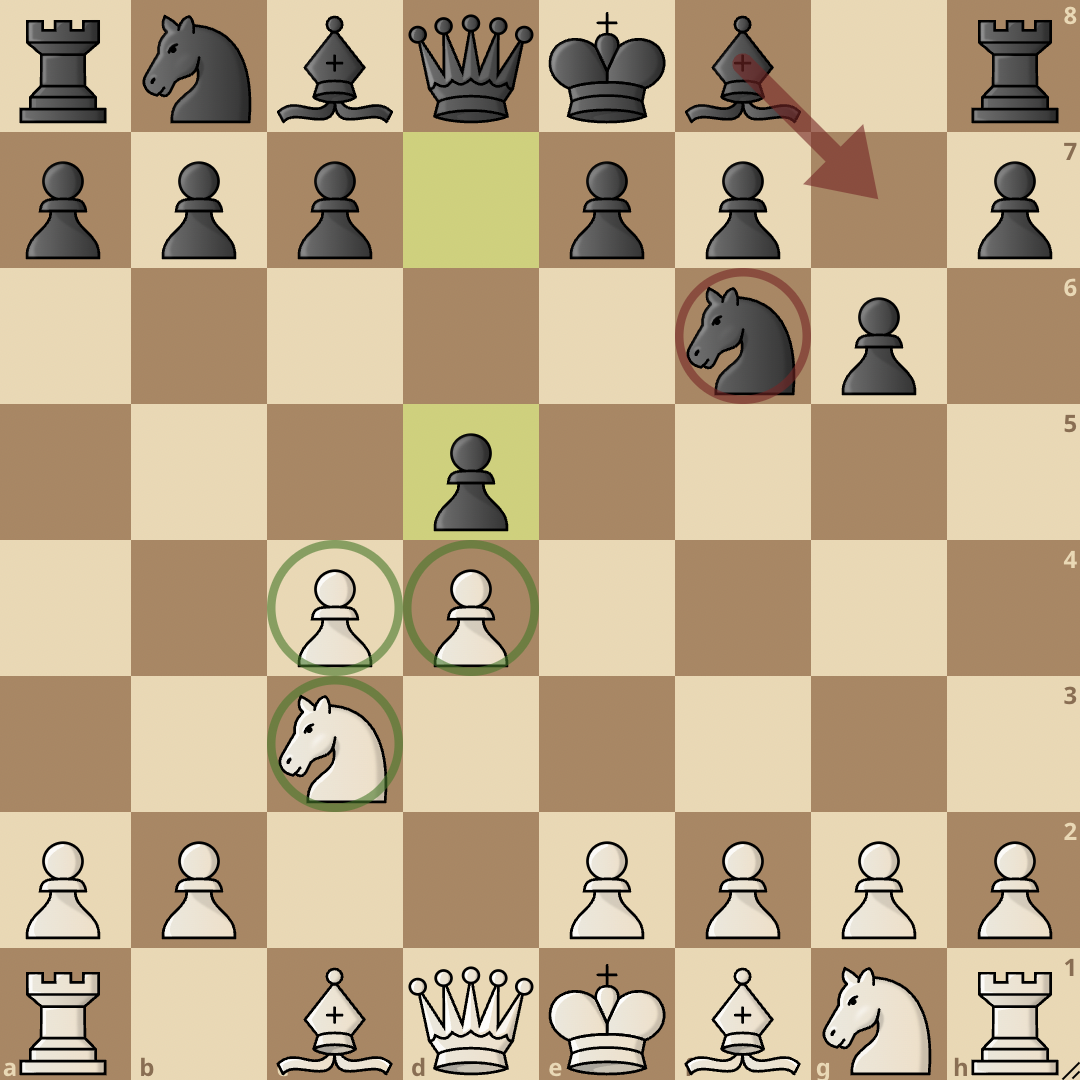
Up until 3…d5, the moves of the Grünfeld Defense are similar to the starting moves of the King’s Indian Defense.
However, after the d5 thrust, Black enters the Grünfeld. 3…d5 immediately attacks the center and challenges White’s dominance, asking them what their plans are.
From here, some popular variations can arise, let’s go over them.
Exchange Variation
1. d4 Nf6 2. c4 g6 3. Nc3 d5 4. cxd5 Nxd5 5. e4 Nxc3 6. bxc3
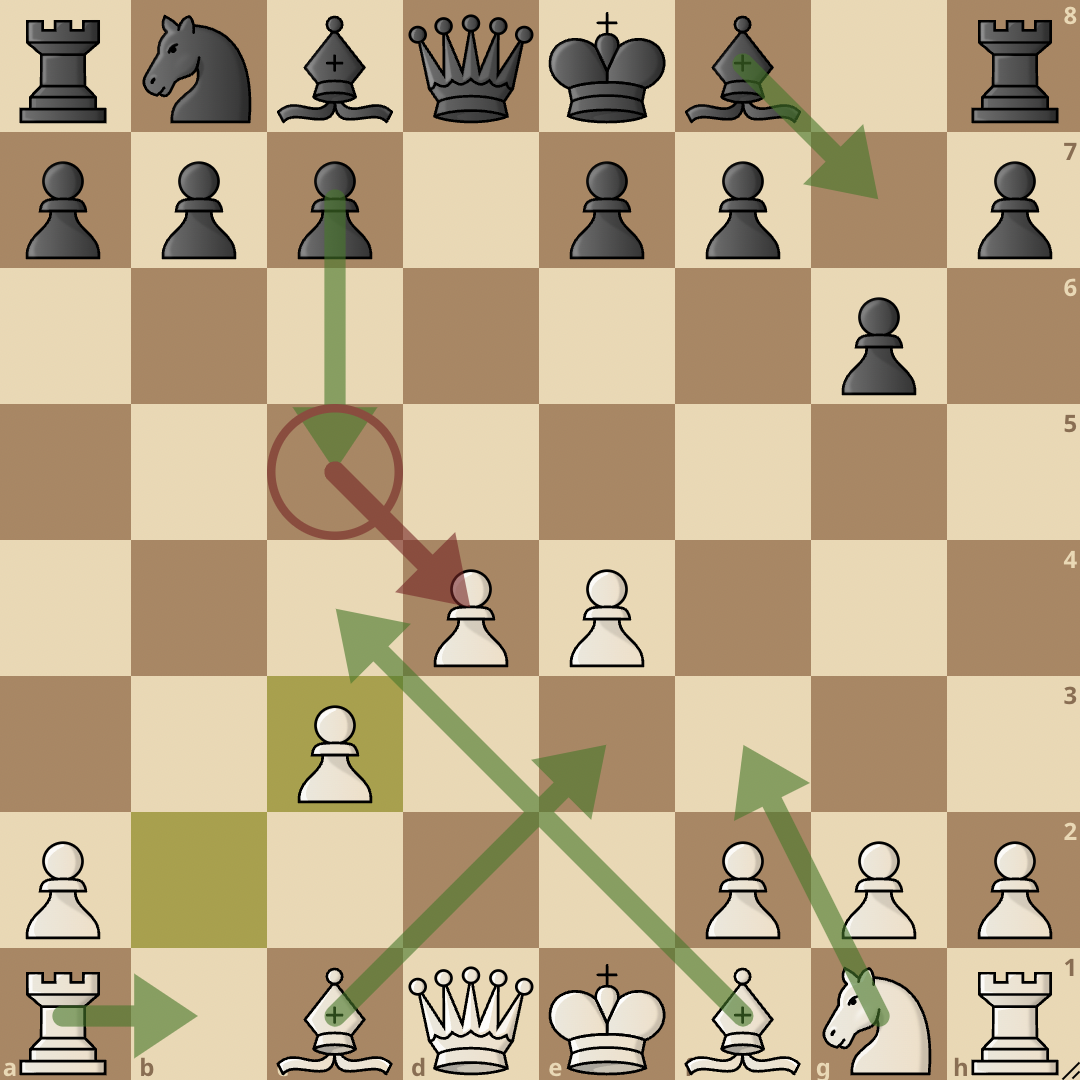
The Exchange Variation is the most played variation of the Grünfeld Defense. The exchange variation starts after Black plays 3…d5.
…d5 challenges White’s control of the center, so White captures in the center with 4. cxd5. Black’s best move in this position is to play 4…Nxd5.
Capturing the pawn on d5 is a must for Black, this is because if Black does not recapture the pawn, White will play e4 and solidify the white pawn on d5.
After 4…Nxd5, White pushes 5. e4, challenging the knight on c3. Black cannot retreat with the knight as that results in a loss of tempo, rather, they will play 5…Nxc3 and White will recapture with 6. bxc3 and Black will fianchetto the bishop 6…Bg7.
From g7, the bishop becomes Black’s strongest piece and it will play a very crucial role in challenging White’s central control as the game goes on.
The bishop on g7 also serves as an enabler for Black’s eventual …c5 break. After…c5 happens, White will have to be very careful because capturing the c5 pawn too early will be disastrous since the c3 pawn would come under immense pressure.
Russian Variation
1. d4 Nf6 2. c4 g6 3. Nc3 d5 4. Nf3 Bg7 5. Qb3 dxc4 6. Qxc4 0-0

The Russian Variation is the second most popular variation of the Grünfeld. It starts with 4. Nf3 by White.
In this variation, White opts to keep the tension between the d- and c- pawns and instead develops a piece.
Black then fianchettoes their bishop with 4. Bg7 and White plays 5. Qb3, increasing the pressure in the center of the board.
Black has to respond and the best move is to capture the c4 pawn with 5…dxc4. White will recapture with 6. Qxc4 and Black will now castle to safety with 6…0-0.
In this position, it is clear that Black has ceded control of the center to White. Therefore, White claims the center with 7. e4.
White now controls a lot of space on the board, however, this center control will not last forever as Black will look to start undermining it with moves like …a6, …b5, and …c5. The presence of the white queen on c4 also gives Black the chance to target her while developing with tempo.
Black’s main idea in this variation will be to undermine White’s center and then strike on the queenside.
Brinckmann Attack
1. d4 Nf6 2. c4 g6 3. Nc3 d5 4. Bf4
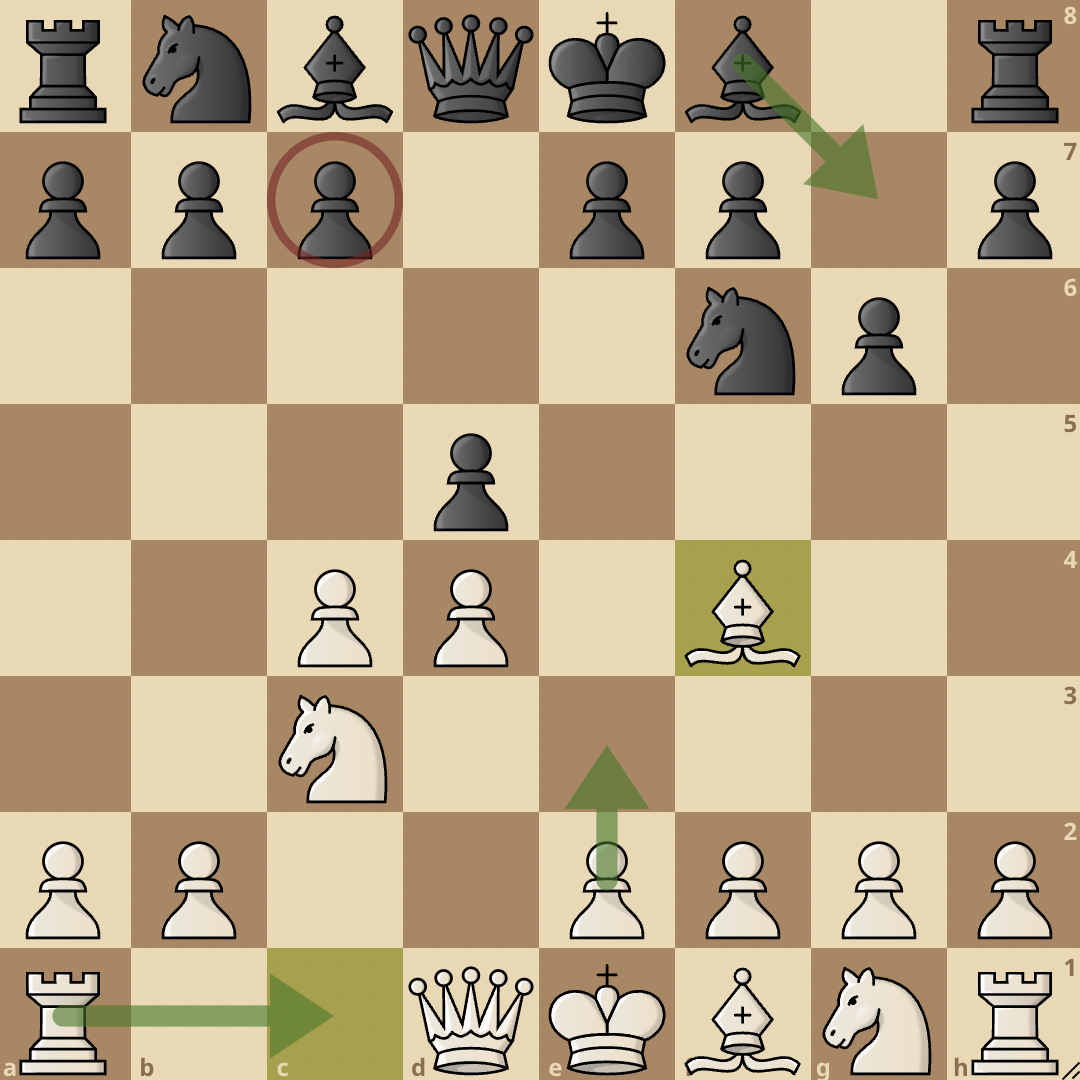
The Brinckmann Attack is a way for White to combat the Grünfeld Defense.
In this variation, White plays the early 4. Bf4 and after Black fianchettos their bishop with 4…Bg7, White plays 5. e3, solidifying their d4 pawn.
With moves like Rc1 coming in for White, Black has to keep an eye on the c7 pawn and c-file so it doesn’t fall into White’s hands.
The Brinckmann Attack is a calmer way of combating the Grünfeld Defense as White does not overextend in the center and they keep everything solid.
Petrosian System
1. d4 Nf6 2. c4 g6 3. Nc3 d5 4. Nf3 Bg7 5. Bg5
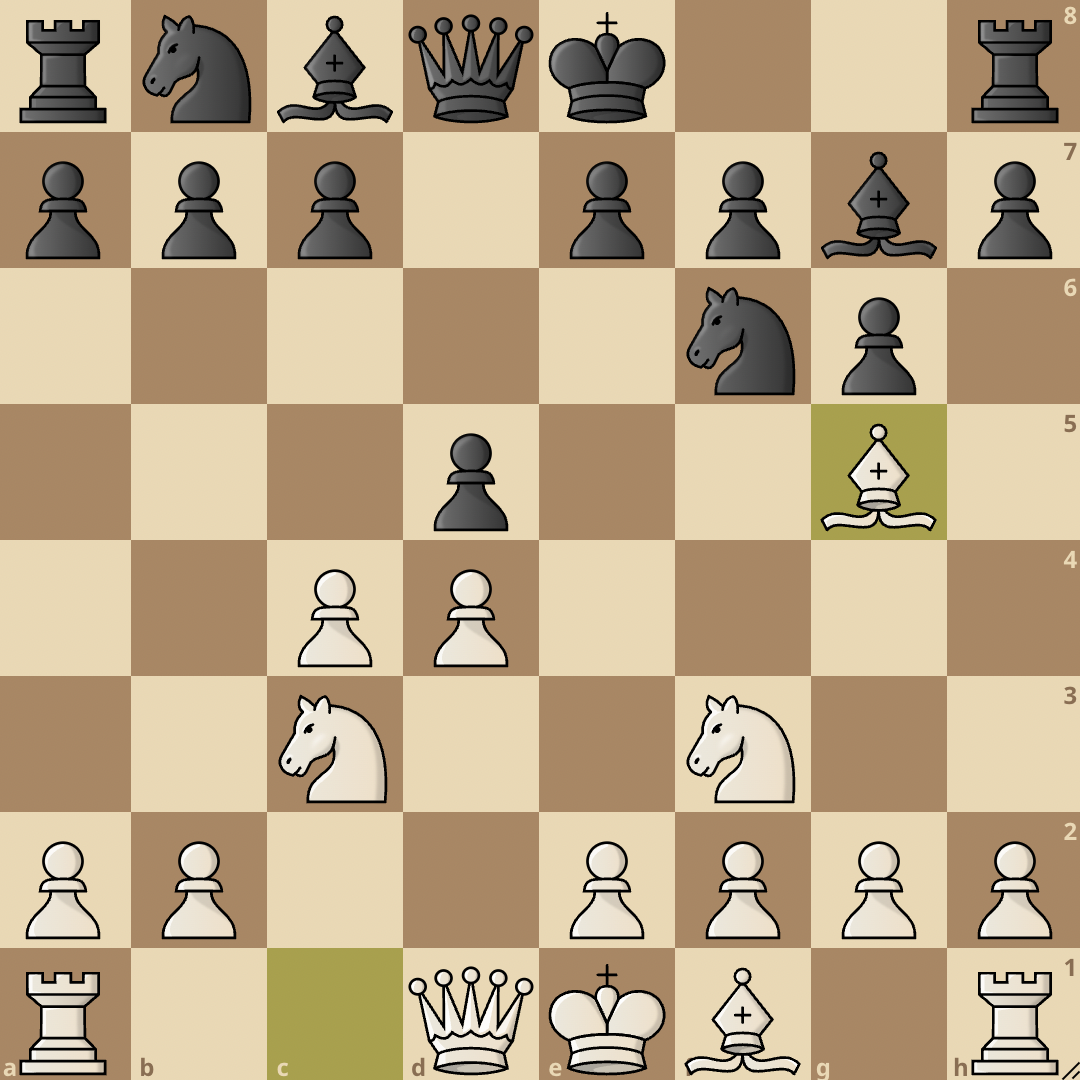
The Petrosian System is a variation that offers White an assertive strategy against the Grünfeld Defense.
It begins with 4. Nf3 by White, to which Black replies 4…Bg7. White then continues with 5. Bg5 and this applies pressure on the f6 knight.
5. Bg5 is the move that indicates the start of the Petrosian system. Black responds with 5…Ne4
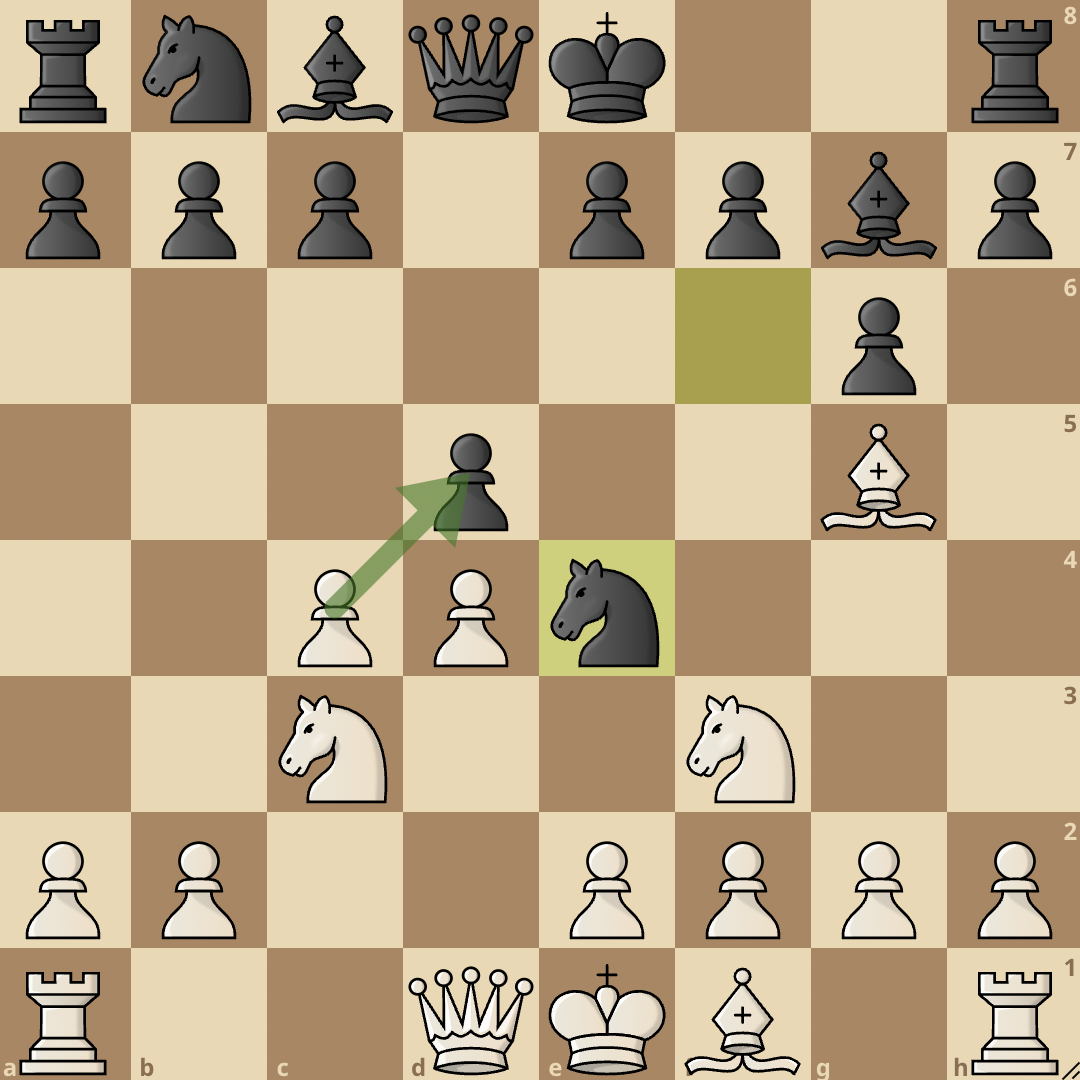
From here the most popular reply for White is to play 6. cxd5, as 6. Nxe4 loses for White after 6…dxe4 7. Nd2 Qxd4 and Black has all the initiative plus an extra pawn.
After 6. cxd5, Black replies with 6…Nxg5, capturing the dark-squared bishop. The move sequence continues with White capturing the Black knight with 7. Nxg5 and Black plays 7…e6.
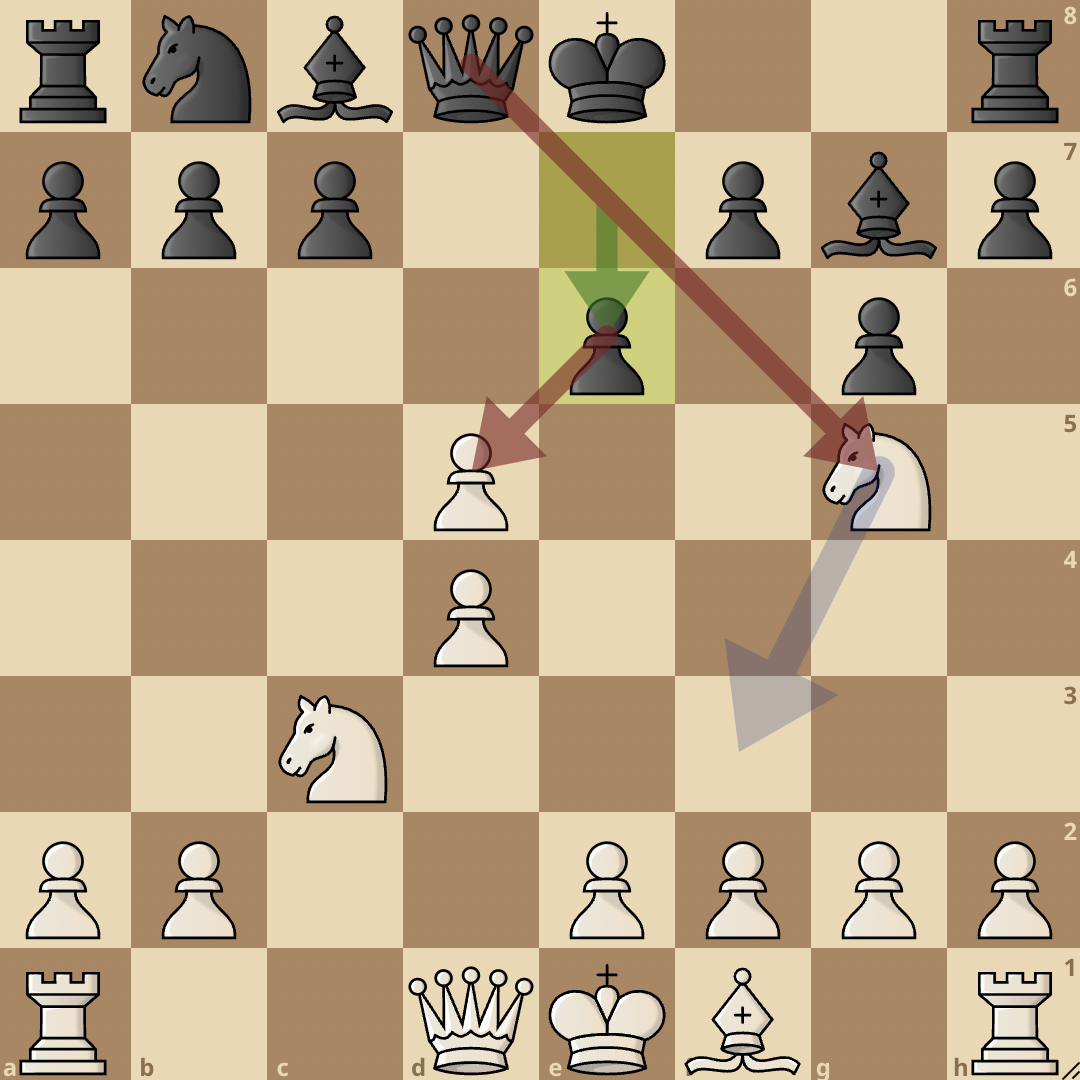
This move simultaneously targets the d5 pawn and exposes the g5 knight to the Black queen’s attack.
In response, White retreats the knight to 8. Nf3, and this ensures that Black equalizes in material with 8…exd5.
Since the White dark-squared bishop has been traded off, there are no worries of it being trapped behind the pawns, so White reinforces their position with 9. e3, which also supports the d4 pawn, and now Black castles with 9…0-0.
White anticipates that Black wants to challenge for the center with c5, so White counters with 10. b4, and this thwarts any potential advance Black might have been planning. Black then counters by consolidating the d5 pawn with 10…c6.
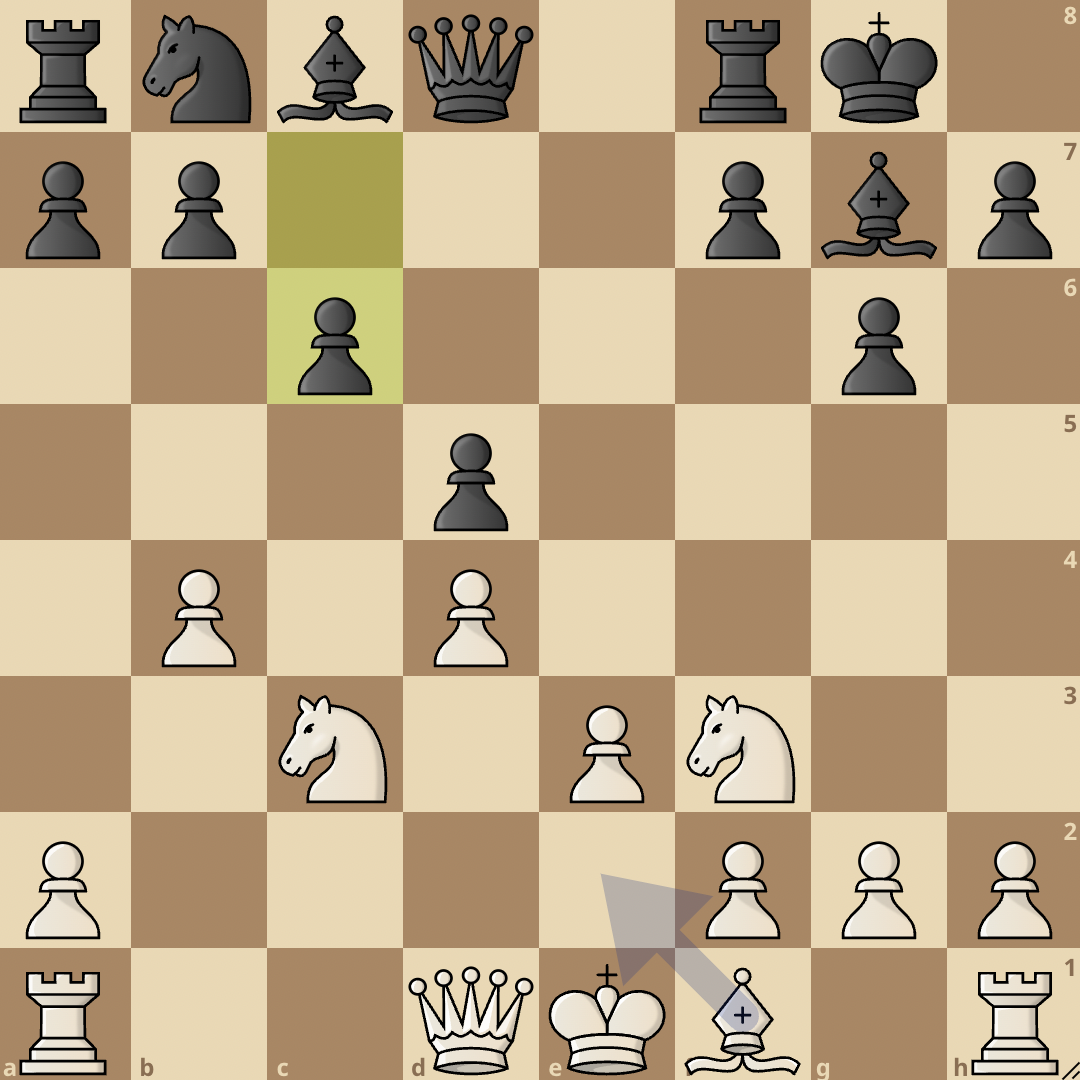
This variation creates a more balanced position, where both sides focus on piece development whilst playing for an advantage in the position.
Successful Deployments
The Grunfeld Defense is very popular in high-level chess, with tens of thousands of games featuring it. Let’s go through some excellent games where the opening was played.
Touch the moves or move the board around for a better interactive experience.
Tigran Petrosian v Robert James Fischer, Fischer – Petrosian Candidates Final (1971)
It was hardly ever a dull affair when two chess heavyweights of the old era clashed over the board in a high-stakes game. In 1971, Petrosian and Fischer met in the Candidates final to determine the challenger for the world title.
Fischer opted to go for the Grünfeld and Petrosian chose the Brinckmann Attack variation. After a hard-fought battle, Petrosian would come on top.
Donald Byrne v Robert James Fischer Third Rosenwald Trophy (1956)
This game between Donald Byrne and Bobby Fischer was so good it was called the Game Of The Century. It happened in the Third Rosenwald Trophy of 1956.
Fischer was still in his youth at that time, but that didn’t mean he wasn’t a deadly opponent.
Donald Byrne definitely felt the wrath of Fischer as the young Bobby employed the Grünfeld Defense to take down Donald Byrne and win the game of the century.
Anatoly Karpov v Garry Kasparov, Kasparov – Karpov World Championship Match (1987)
Karpov and Kasparov were very fierce rivals and they played a lot of games against each other. This game was from their 1987 World Chess Championship match, and it featured the Exchange Variation of the Grünfeld.
Kasparov would go on to play the opening excellently well and pick up the win against his worthy adversary.
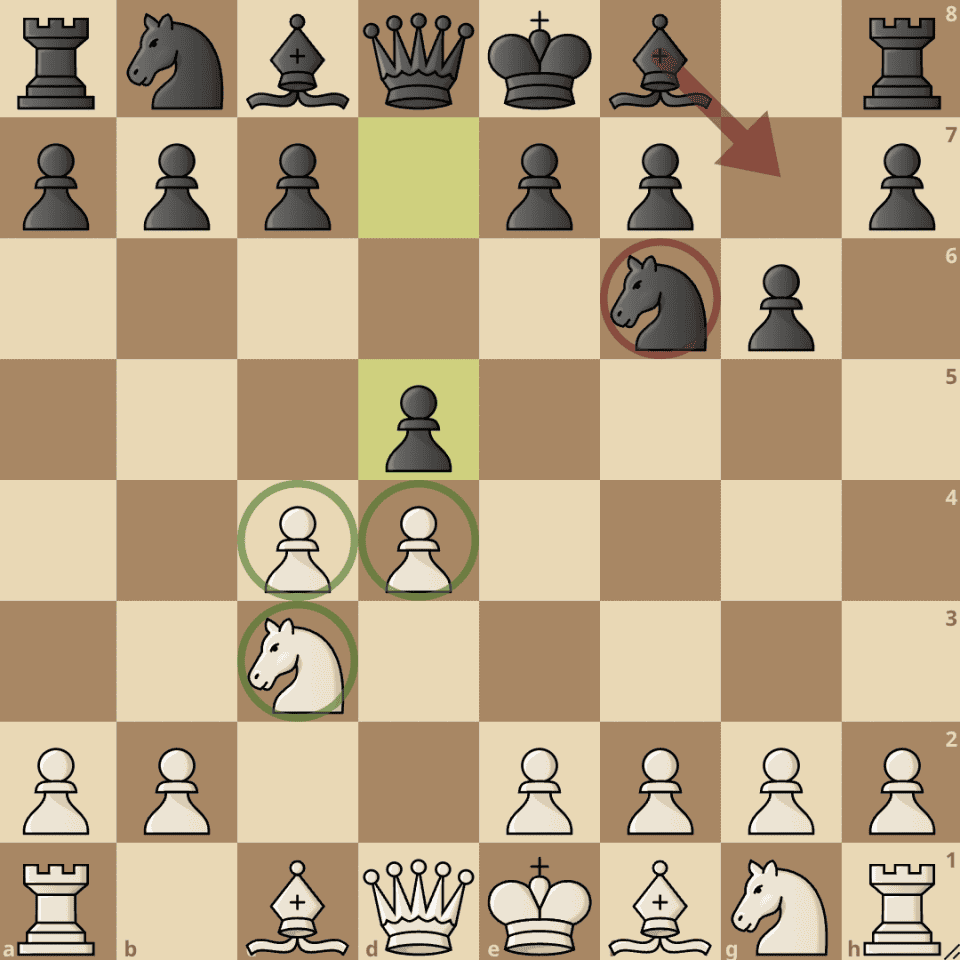



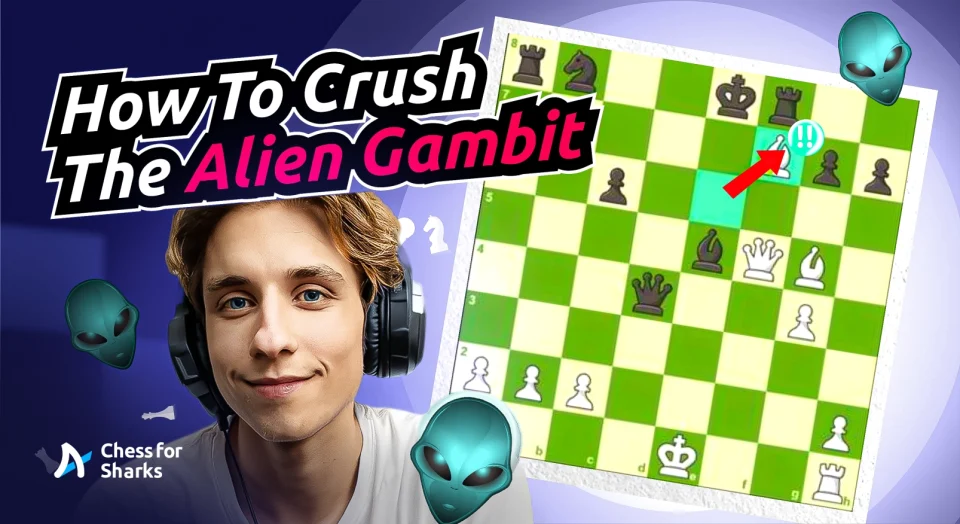

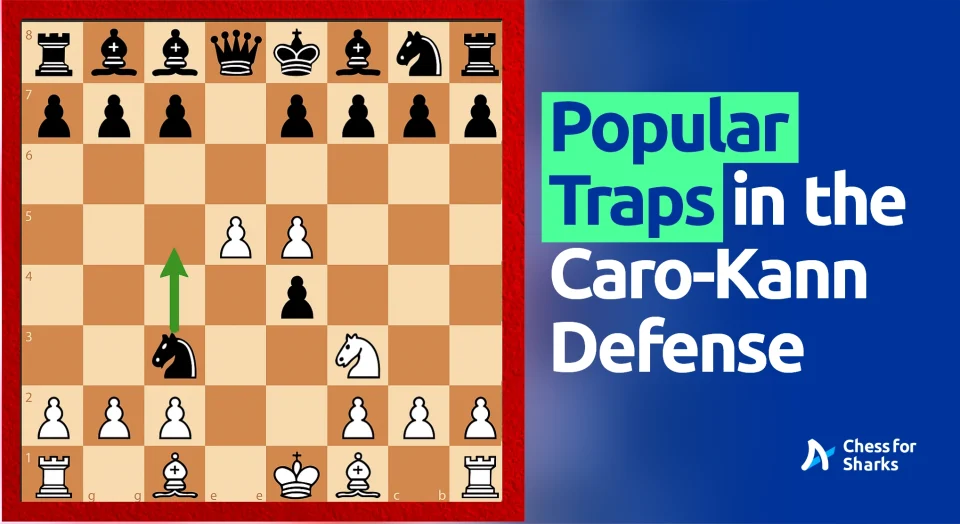
join the conversation